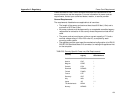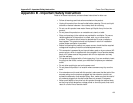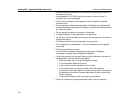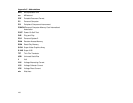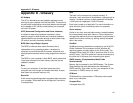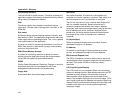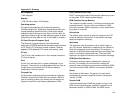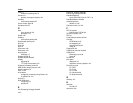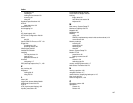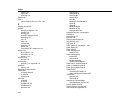
Appendix D - Glossary
161
Appendix D - Glossary
AC Adapter
The AC (or alternating current) adapter regulates current
coming into your computer from the wall outlet. The current at
the wall outlet is alternating current and needs to be changed
by the adapter to DC (direct current) before your computer
can use it for power.
ACPI (Advanced Configuration and Power Interface)
A method for describing hardware interfaces in terms
abstract enough to allow flexible and innovative hardware
implementations and concrete enough to allow shrink-wrap
OS code to use such hardware interfaces.
BIOS (Basic Input/Output System)
The BIOS is software (often called firmware) that is
independent of any operating system. It enables the
computer to communicate with the screen, keyboard, and
other peripheral devices without using programs on the hard
disk.
The BIOS on your computer is flash BIOS, which means that
it has been recorded on a flash memory chip that can be
updated if needed.
Boot
To start your computer. A cold boot resets the entire
computer and runs through all computer self-tests. A warm
boot clears out computer memory only.
Boot disk
A disk containing operating system programs required to start
your computer. A boot disk can be a floppy disk, hard drive,
or compact disc.
Byte
The basic unit of measure for computer memory. A
character—such as a letter of the alphabet—uses one byte of
memory. Computer memory is often measured in kilobytes
(1,024 bytes) or megabytes (1,048,576 bytes).
Each byte is made up of eight bits. For more information on
bytes and bits, see an introductory book on computers.
Cache memory
Cache is very fast, zero-wait-state memory located between
the microprocessor and main memory. Cache reduces the
average time required by the microprocessor to get the data it
needs from the main memory by storing recently accessed
data in the cache.
CardBus
CardBus technology enables the computer to use 32-bit PC
Cards. Hardware in the computer and the Windows 98
operating system provide support for the 32-bit cards. The
voltage of 32-bit cards (3.3 volts) is lower than that of 16-bit
cards (5 volts). The 32-bit cards can transmit more data at a
time than the 16-bit cards, thus increasing their speed.
CMOS memory (Complementary Metal Oxide
Semiconductor)
Memory that is powered by the CMOS battery. The System
Setup settings and other parameters are maintained in
CMOS memory. Even when you turn your computer off, the
information in CMOS memory is saved.
COM port
COM stands for communication. COM ports are the serial
ports in your computer.
Compact Disc
A compact disc (CD).



